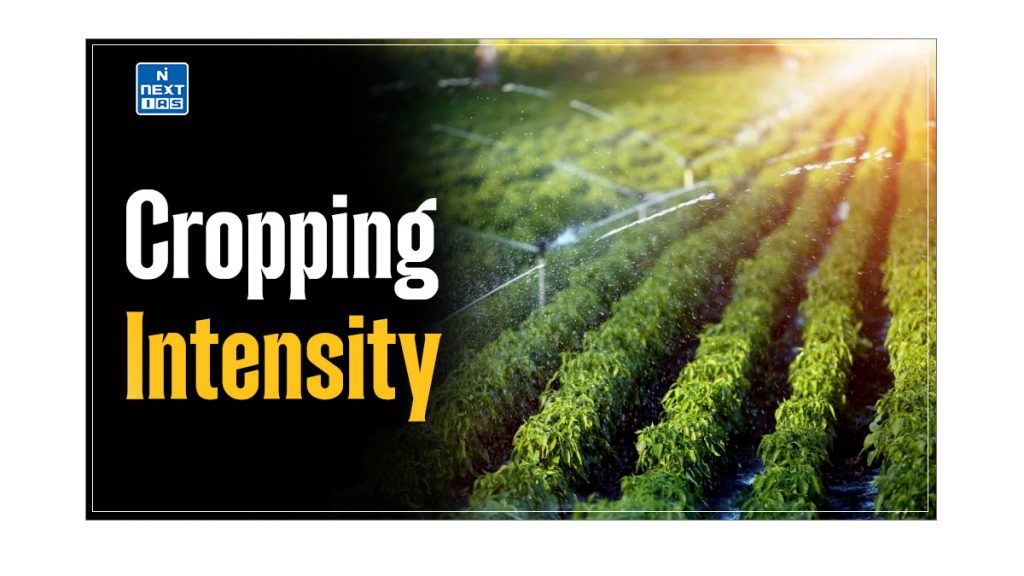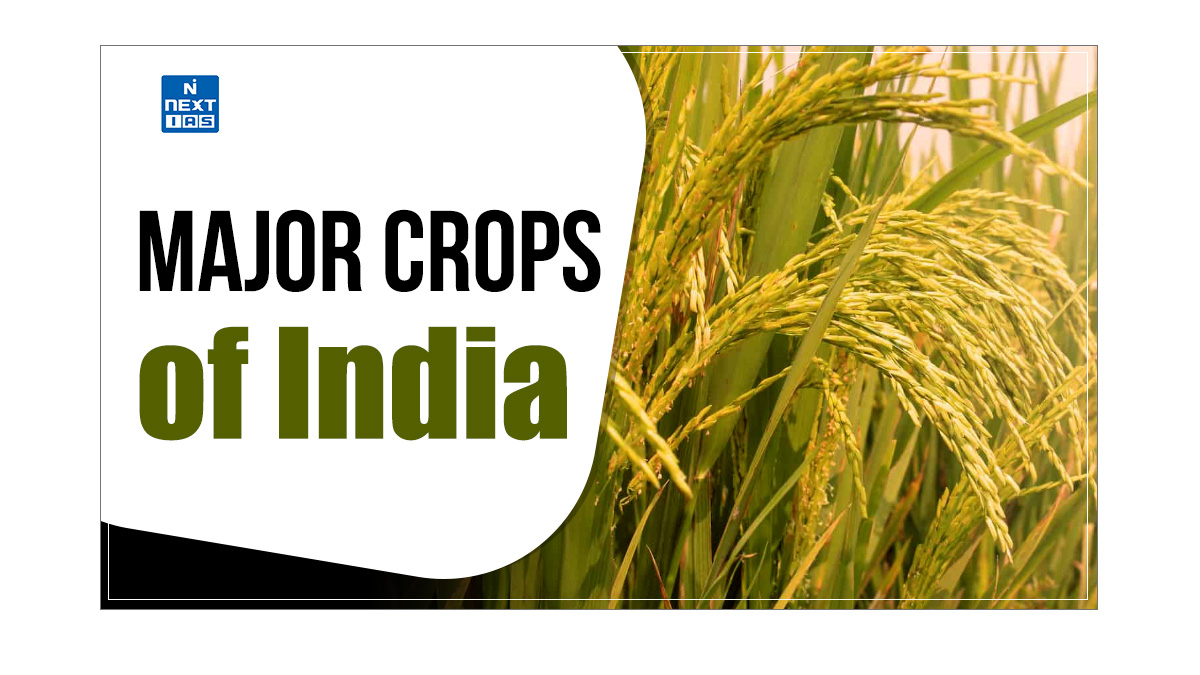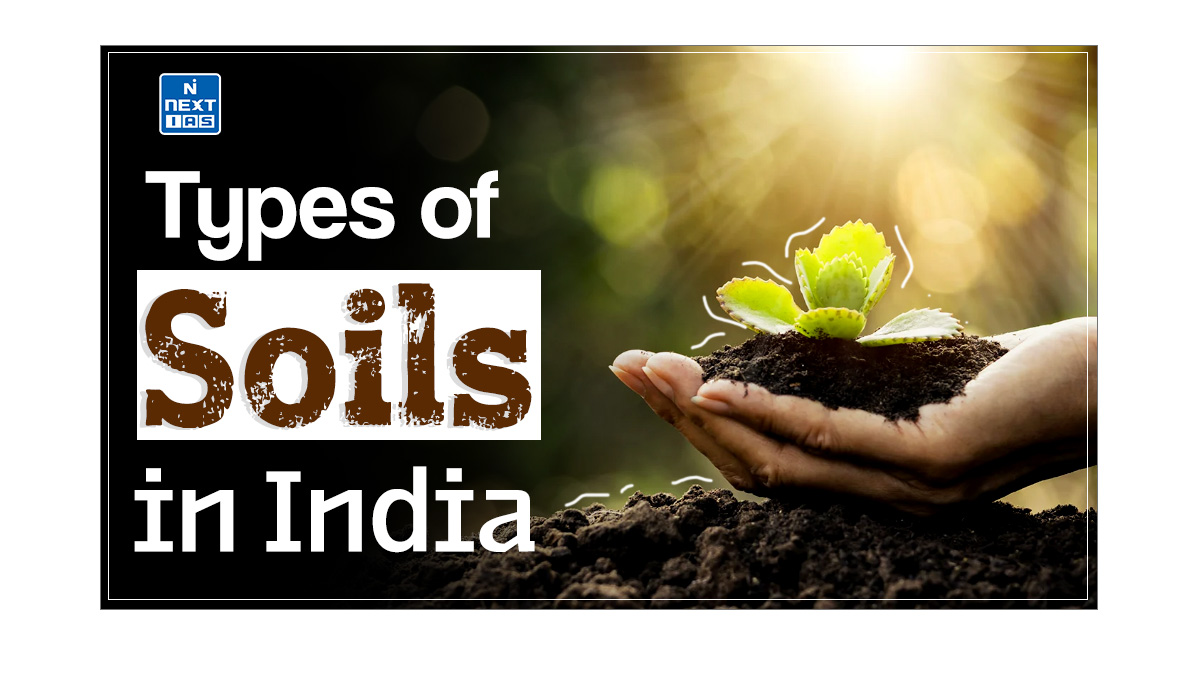
Cropping Intensity in India measures the number of crops grown on the same field within a single agricultural year, reflecting the efficiency of land use. It helps in assessing agricultural productivity and identifying areas where improvements can be made to meet the increasing demand for food. This article aims to study in detail the factors influencing cropping intensity, regional variations, and methods to enhance it for sustainable agricultural growth.
What is Cropping Intensity?
- It refers to raising the number of crops from the same field during one agricultural year. It can be expressed through a Cropping Intensity formula:
| Cropping Intensity = Gross Cropped Area/Net Sown Area x 100. |
- The gross sown area is the cumulative area (sown more than once) cultivated within a year by various crops.
- For example, if a farmer has 100 ha of land and, in the Kharif season, he cultivates 90 ha of area, 40 ha in Rabi, and 20 ha in Zaid.
- Thus, Gross sown area = 150 acres, which means that the farmer utilised the total cultivated land 1.5 times or 150%, which is termed the cropping intensity.
- India has the largest cultivated land in the world, but the potential to increase the total cultivable area is low.
- However, the demand for food and industrial crops has been ever-increasing.
- Thus, the only method to increase output is to increase cropping intensity.
Factors Influencing Cropping Intensity in India
There are 5 derivations for it which have been discussed in the following section:
- It is directly proportional to the use of modern inputs and technology.
- It tends to be higher where labour-intensive farming is found.
- For example, West Bengal and Bihar have higher Cropping Intensities because of high labour supplies and unemployed people working on land for livelihood.
- Subsistence farming has higher crop diversity along with intensity.
- E.g., Northern Bihar, Eastern UP, Malabar west.
- The climatic control on intensity is also palpable.
- For example, in wet areas, intensity is higher.
- In the rich alluvial soil regions with higher land capability, it can be varied as follows:
- River valleys and deltas have high intensity due to water and soil fertility assurance.
- High population density regions have high intensity.
- Regions with a high land-man ratio have low Cropping Intensities.
- Government policies related to subsidies and infrastructure facilities also determine cropping intensities.
| State | Cropping Intensity |
| Punjab | 196% |
| Haryana | 188% |
| West Uttar Pradesh | 174-175% |
| Tamil Nadu | 174-175% |
| West Bengal | 170% |
| Bihar | 165% |
Methods to Increase Cropping Intensity
Following are the methods or inputs that are implemented for increasing the intensity of a region:
- Irrigation facilities.
- HYV of crops which have a short growth period.
- Cropping methods like relief farming, mixed farming, and strip cropping.
- Use of modern inputs like chemical fertilisers, pesticides, and weedicides.
- Farm mechanisation.
- Conservation methods – soil or water conservation.
- Commercialisation in trade and capitalistic farming.
An increase in cropping intensity would give farmers more cash/buying power, enabling them to cultivate more.
Spatial Pattern of Cropping Intensity
India can be divided into four regions/zones based on the intensity. The different zones shown in the table are discussed below:
| Region | Cropping Intensity | CroppingIntensityIndex |
| I | Very high Cropping Intensity | >175 |
| II | High Cropping Intensity | 150-175 |
| III | Moderate Cropping Intensity | 125-150 |
| IV | Low Cropping Intensity | <125 |
Region I
- This region has the highest Cropping intensity. It includes the states of Punjab, Haryana, and West Bengal.
- The Punjab and Haryana plains are sub-humid alluvial regions with good alluvial soil and moderate to high land capability.
- After the Green Revolution, the use of modern inputs, technology, and irrigation facilities increased considerably.
- The area has developed rural infrastructure, command area development, government incentives and finance, capitalistic farming, and larger land holdings with farm mechanisation.
- This region has diversified its cropping pattern from wheat monoculture, and in addition to wheat, rice, cotton, sugarcane, oilseeds, and grams are also cultivated.
- Productivity, agricultural output, per-capita yield, and per-capita money income from land are very high.
Region II
- This region has a high Cropping Intensity but lower than Region I. It includes the areas of UP, Bihar, Assam, Kerala, and Tamil Nadu.
- These regions have humid climatic conditions with good fertile soil, which makes the land capability high.
- This area comes under land class I, which can be cultivated three times a year without the land fertility deteriorating.
- Hydrology supports agriculture throughout the year, with soil renewal almost every year.
- Partial use of modern inputs and technology and partial mechanisation have made agriculture in the region sustainable.
- The carrying capacity of land is very high; however, productivity is less as compared to Tamil Nadu and Punjab due to social factors, which include high population density, low land-to-man ratio, and subsistence farming, which has resulted in high intensity.
- The major crops are rice, wheat, pulses, oilseeds, and maize. Due to agriculture’s subsistence nature, there is greater diversification.
Region III
- This region has moderate Cropping Intensity. It includes the areas of Karnataka, Andhra Pradesh, Maharashtra, and Madhya Pradesh.
- These regions have sub-humid to semi-arid climatic conditions. The soil capability is moderate, and after irrigation, it can provide greater yield.
- The land-to-man ratio is moderate to high, and the land’s carrying capacity is low.
- There is a need to expand dry-land agriculture. Major crops grown are millets, groundnuts, tobacco, and oilseeds.
- In areas where irrigation is possible, i.e., river valleys and deltas, the Cropping Intensity is 190%, e.g., Krishna Godavari delta, tube well-irrigated region of Maharashtra, and Kaveri basin of Karnataka.
Region IV
- This region has low Cropping Intensity. It includes the areas of Gujarat, Jammu and Kashmir, Rajasthan, the North Eastern States, Odisha, Himachal Pradesh, and Jharkhand.
- These states have physiographic or climatic constraints. They exhibit highly diversified cropping patterns.
- Socio-economic factors like tribal economies and environmental hazards such as landslides, excessive rainfall, and cloud bursts are key constraints in the region’s agriculture development.
- Productivity is low in these states. The per-capita agricultural labour output and the total money value earned from agriculture are low.
- The per-hectare yield of the region is moderate to poor.
Conclusion
Cropping intensity serves as a vital measure of agricultural productivity, indicating how effectively land resources are utilised throughout the year. The varying levels of cropping intensity across different regions of India reflect a complex interplay of factors, including climate, soil fertility, technology, and socio-economic conditions. By addressing the regional disparities and implementing appropriate methods to enhance cropping intensity, India can better meet its agricultural needs and achieve sustainable growth in food production.
Frequently Asked Questions (FAQs)
What is Cropping Intensity?
Cropping intensity refers to the number of times crops are grown and harvested in a given area of land within a year.






